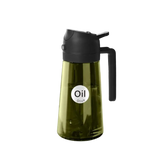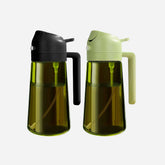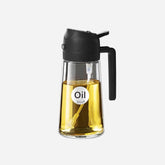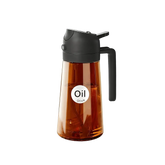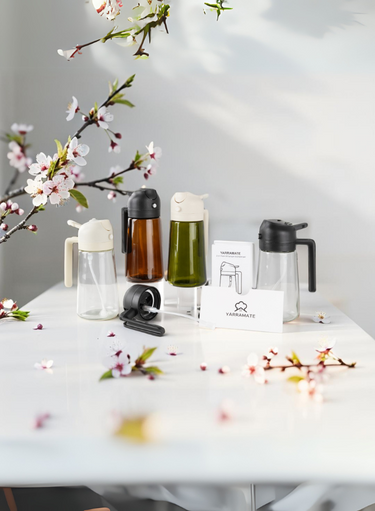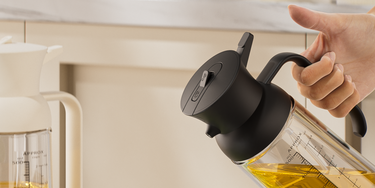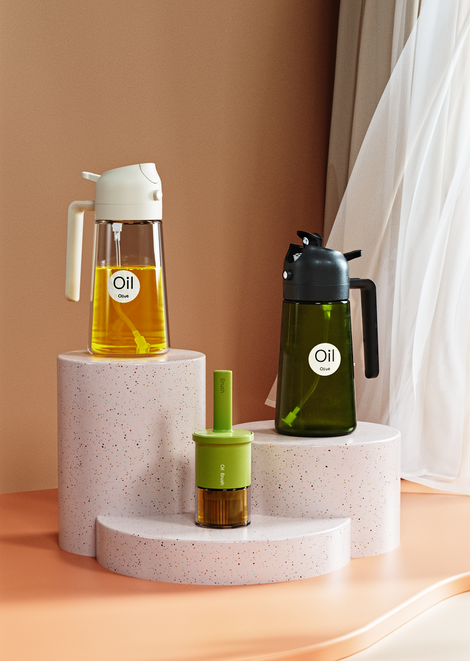Aceite bajo en calorías: información nutricional, sustitutos y guía de porciones
Caminar por el pasillo del supermercado y contemplar las filas de botellas de aceite —de oliva, de aguacate, de girasol— puede resultar abrumador. Pero no te preocupes: esta guía te ayudará a elegir con confianza el aceite de cocina adecuado para tus objetivos de salud, hábitos culinarios y productos esenciales de despensa.
Por qué las calorías no significan “poco saludable”
La cuestión es que la mayoría de los aceites de cocina son ricos en calorías. Una sola cucharada aporta unas 120 calorías , independientemente de si se trata de aceite de oliva, aceite de aguacate o aceite de semilla de uva. Pero esas calorías no son "vacías". Suelen estar repletas de grasas saludables, vitamina E y antioxidantes que el cuerpo necesita.
La Asociación Americana del Corazón incluso recomienda el uso de grasas insaturadas, como las presentes en el aceite de oliva y de canola, en lugar de grasas saturadas o trans ( fuente de AHA ). Por lo tanto, aunque las cifras calóricas puedan parecer intimidantes, no significan automáticamente que los aceites sean "malos".
Descomposición de aceites: calorías y nutrición
Aceite de oliva
El aceite de oliva, un clásico de la cocina, aporta unas 124 kcal por cucharada . Es rico en grasas monoinsaturadas y antioxidantes. Además de su valor nutritivo, aporta un toque picante a las ensaladas o al pan caliente. Usar un pulverizador de aceite de oliva ayuda a controlar las porciones y a conservar ese sabor mediterráneo tan característico.
Aceite de aguacate y canola
- Aceite de aguacate : alrededor de 124 kcal por cucharada, sabor suave, alto punto de humo y repleto de grasas saludables para el corazón.
- Aceite de canola : Tiene un contenido calórico similar, pero menos grasas saturadas que muchas alternativas. Su sabor neutro lo convierte en una opción ideal para saltear.
Ambas son opciones prácticas para el día a día si te gustan los aceites versátiles que no opaquen el sabor de tu plato.
Aceite de coco y semilla de uva
- Aceite de coco : Ligeramente más bajo en calorías (aproximadamente 117 kcal por cucharada), pero más rico en grasas saturadas. Consumir con moderación.
- Aceite de semilla de uva : aproximadamente 120 kcal por cucharada, con un punto de humo más alto y un sabor sutil, lo que lo hace perfecto para asar verduras.
Sustitutos de cocina bajos en calorías
Caldo y vinagre
El caldo de verduras o de pollo puede sustituir al aceite al saltear cebollas o champiñones. Un chorrito de vinagre de manzana o vinagre balsámico le da un toque ácido con solo unas pocas calorías: entre 2 y 14 por cucharada.
Puré de manzana en repostería
¿Vas a hornear brownies? Prueba a sustituir parte del aceite por puré de manzana sin azúcar. Mantiene la humedad de los productos horneados y reduce la carga calórica.
Sprays y nebulizadores
Un atomizador de aceite (como un atomizador recargable) proporciona sabor con una fina capa, mucho menos que un vertido completo. Es uno de los trucos más fáciles para reducir calorías sin sacrificar el sabor.
Cómo controlar las porciones sin perder el sabor
Aquí es donde la verdadera experiencia en la cocina marca la diferencia. Con los años, me encontré vertiendo mucho más aceite del necesario, especialmente al cocinar con amigos o al preparar una receta con prisas. Dos simples hábitos lo cambiaron todo:
- Cepille, no vierta : un cepillo para botellas de aceite Yarramate le permite cubrir ligeramente sartenes o pan con la cantidad justa de aceite, sin desperdicio.
- Rocíe, no empape : un rociador de aceite Yarramate rocía uniformemente ensaladas o vegetales asados, ahorrando calorías y mejorando el sabor.
Reflexiones finales: Disfrute los aceites sabiamente
No existe un aceite verdaderamente bajo en calorías. El aceite de coco puede reducir algunas calorías, pero la diferencia es mínima. En lugar de buscar las cantidades más bajas, concéntrate en:
- Elegir aceites ricos en grasas saludables.
- Utilizar sustitutos como caldo o vinagre cuando el aceite no es esencial.
- Control de porciones con pinceles, pulverizadores y cucharas medidoras.
Cocinar con aceites puede ser saludable y satisfactorio si se usan con cuidado. Con las herramientas adecuadas y un poco de atención, obtendrás el sabor, la textura y los nutrientes necesarios, sin excesos innecesarios.


